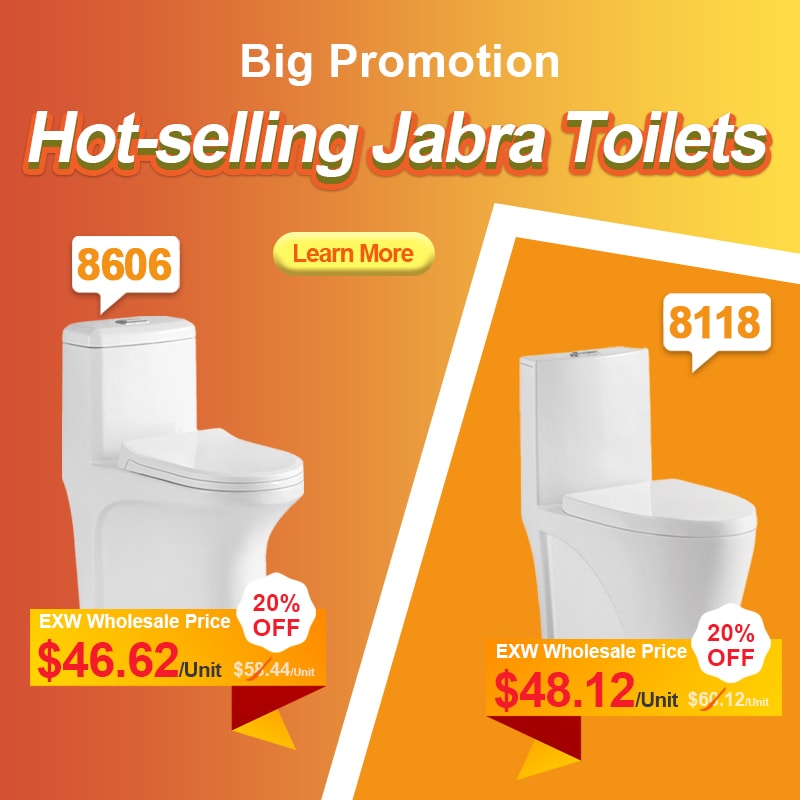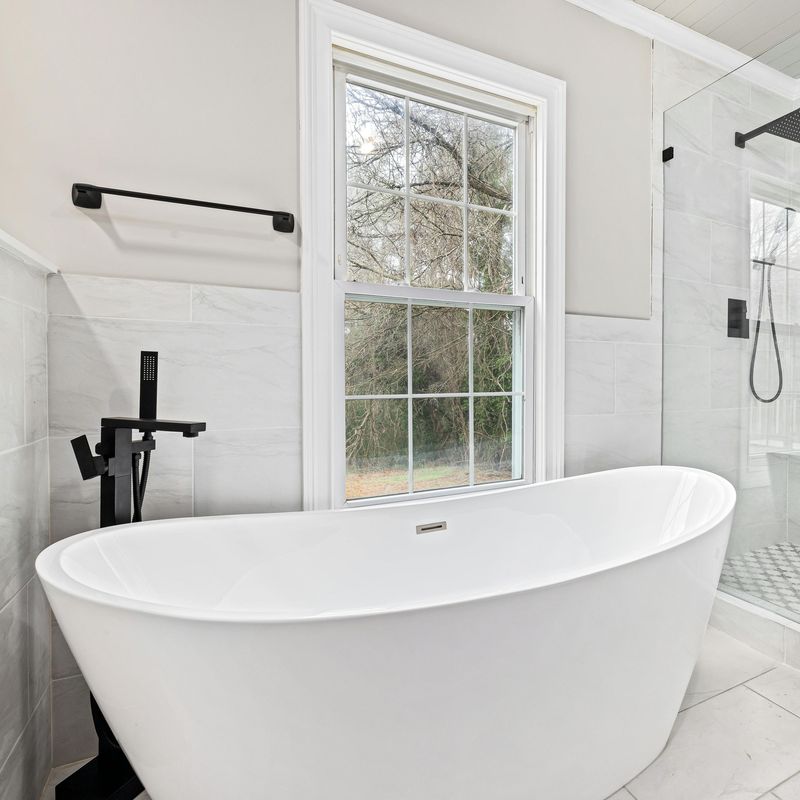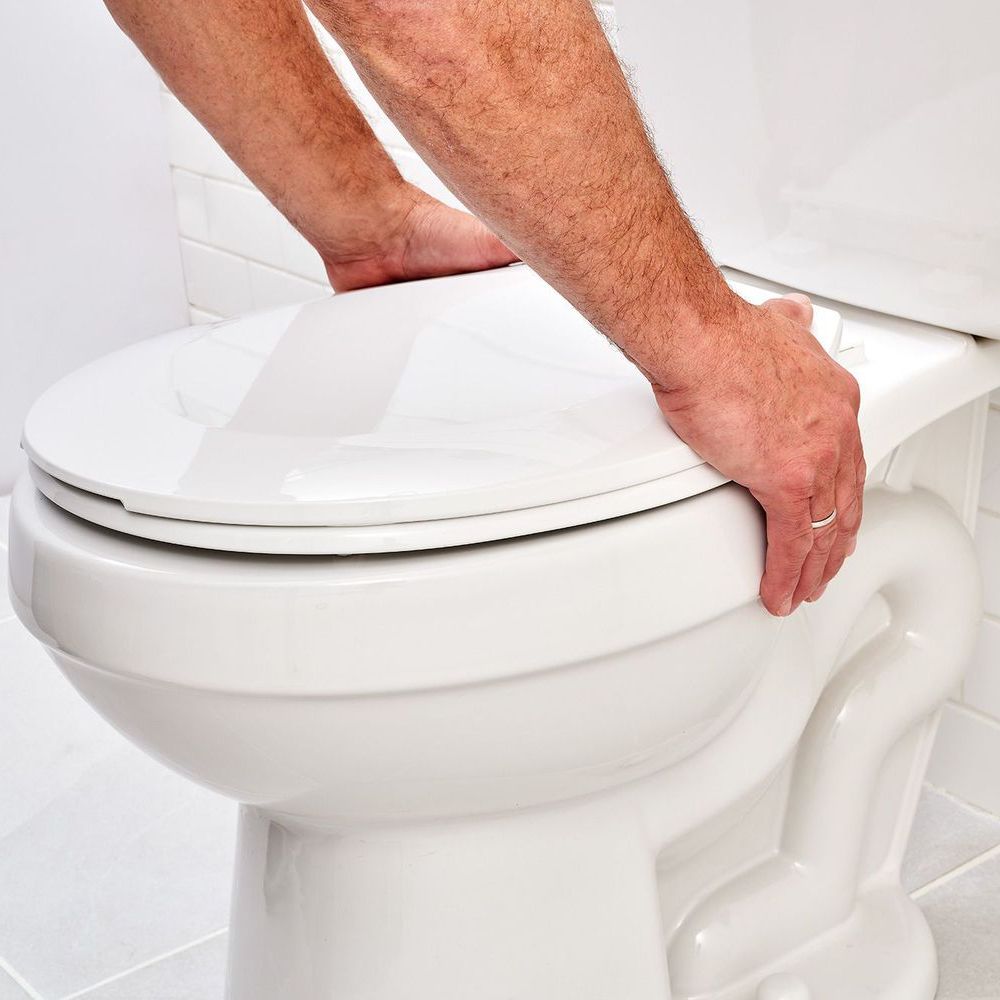 English
English
Jabra Sanitary is a sanitaryware supplier offering toilets, sinks, faucets, bathtubs, etc., at competitive prices. If you're a distributor, wholesaler, or project contractor, get a quote today!
 $23.9 Limited-time Offer
$23.9 Limited-time Offer Consignment Policy
Consignment Policy 20 Years of Experience
20 Years of Experience
When choosing the perfect toilet for your bathroom, one of your key decisions is whether to go with a skirted or a non-skirted (regular) model. Both skirted and regular toilet has its own advantages and disadvantages, depending on your preferences for aesthetics, maintenance, and functionality.
In this article, we'll examine the differences between skirted and non-skirted toilets and types of skirted toilets. Understanding these key differences will help you make an informed decision about which type of toilet suits your needs.
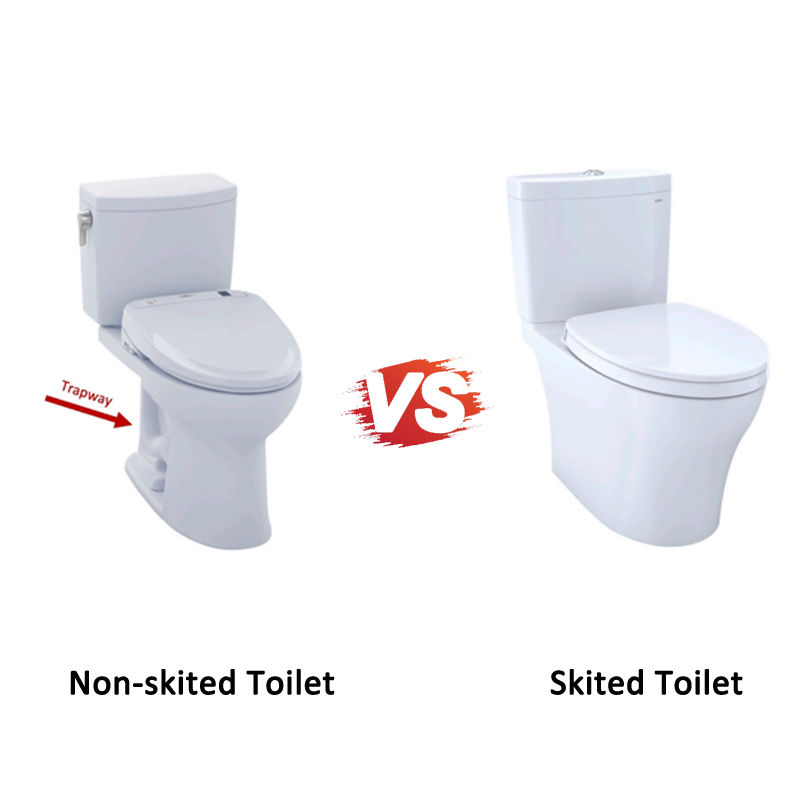
Table of Contents
Skirted Toilet vs. Non-Skirted Toilet: Key Differences
What is a Skirted Toilet?
Pros and Cons of a Skirted Toilet
What is a Non-Skirted Toilet?
Pros and Cons of a Regular, Non-Skirted Toilet
Comparison: Skirted Toilet vs. Non-Skirted Toilet
Types of Skirted Toilets
FAQs
Conclusion: Choose the Best Skirted Toilets for Your Bathroom
Skirted Toilet vs. Non-Skirted Toilet: Key Differences
The most obvious difference between skirted and regulal toilets is their shape and appearance. Additionally, cost and cleaning are factors that should be considered.
Here are the detailed differences between skirted vs non-skirted toilets to help you decide which one is the right fit for you:
Aspect |
Skirted Toilet |
Non-Skirted Toilet |
|---|---|---|
Design and Aesthetics |
Sleek, modern, minimalist design with an enclosed base |
Traditional design with exposed pipes and bolts |
Ease of Cleaning |
Easy to clean, smooth surface with fewer crevices |
Require more effort to clean due to exposed pipes and crevices |
Maintenance |
Low maintenance, fewer exposed parts to wear and tear |
More maintenance is required, exposed pipes may rust or corrode |
Performance and Functionality |
Similar flushing performance; may be harder to repair due to design |
Similar flushing performance; easier access for repairs |
Consumer Preferences and Trends |
Popular in modern, high-end bathrooms, minimalist design |
Preferred for traditional, budget-friendly designs |
Cost Considerations |
More expensive due to advanced design and materials |
More affordable, simple design with exposed pipes |
Installation Process |
May require specialized tools for installation |
Easier installation, and exposed parts allow for DIY setup |
Environmental Impact and Efficiency |
Durable and efficient with proper flushing systems |
Water-efficient options available; comparable environmental impact |
What is a Skirted Toilet?
A skirted toilet is a toilet that comes equipped with a fully skirted apron. This toilet with a skirt covers and hides the trapway for a seamless look, as opposed to the exposed trapway of a standard toilet.
This skirted design is ideal for those who appreciate a minimalist aesthetic. It's particularly suited for individuals who value cleanliness and prefer not to spend time scrubbing every corner.
However, the fully skirted design can add significant bulk, which may not fit smaller bathrooms best.
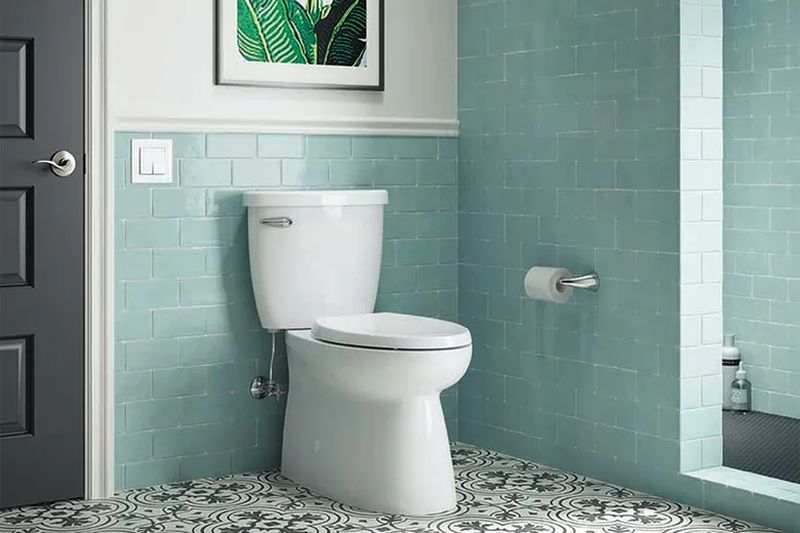
Pros and Cons of a Skirted Toilet
A skirted trapway toilet has its pros and cons. Learn the details as below to help you make an informed decision:
Pros of a Skirted Toilet
Easy to Clean
The smooth and enclosed design of the skirted toilets makes cleaning much easier. Without visible pipes or gaps, dirt, dust, and cleaning products are less likely to build up.
This makes it quicker and simpler to wipe down, keeping your bathroom hygienic.
Contemporary Look
Fully skirted toilets are sleek and modern, giving your bathroom a high-end and minimalist feel. Their seamless design adds luxury and sophistication, making them perfect for creating a modern bathroom with clean lines and a clutter-free look.
Add-On Options Available
Many skirted trapway toilets come with extra features like advanced flushing systems, heated seats, soft-close lids, and even smart technology. These add-ons provide extra comfort and convenience, making the fully skirted toilets more functional and luxurious.
Cons of a Skirted Toilet
Difficult to Install
Skirted toilets can be harder to install due to their enclosed base. This may require specialized tools and professional help, adding extra costs for installation.
Takes Up Extra Space
The enclosed base design can make skirted toilets bulkier, taking up more space than non-skirted models. This might be a problem in smaller bathrooms where space is limited.
More Expensive
The toilets with skirted trapway usually cost more than non-skirted ones. The advanced design, features, and installation complexity contribute to the higher price tag.
Best For
Fully skirted toilets are ideal for those who want a stylish and modern bathroom that can be easily cleaned. They are also suitable for those who don't mind paying more for luxury features.
What Is a Non-Skirted Toilet?
A non-skirted toilet lacks the smooth and enclosed design around the base typically found in skirted toilets. The visible S-shaped pipe on the bottom side of the toilet is called the trapway—toilet water flushes into your system via this pipe.
It is more difficult to clean this toilet due to its design. However, they are more affordable.
Pros and Cons of a Regular, Non-Skirted Toilet
A non-skirted (regular) toilet also has its advantages and drawbacks. Here is a breakdown to help you make an informed decision:
Pros of a Regular, Non-Skirted Toilet
Cost-Effective
Non-skirted toilets are more affordable compared to skirted models. They are a great option for homeowners on a budget or those who need a functional and no-frills toilet. The simpler design and fewer features mean a lower cost.
Basic Installation
Non-skirted(Regular) toilets are easier to install. The exposed base makes it simpler to connect plumbing, and no specialized tools are needed. If you're a DIYer or want to reduce installation costs, non-skirted toilets are a good choice.
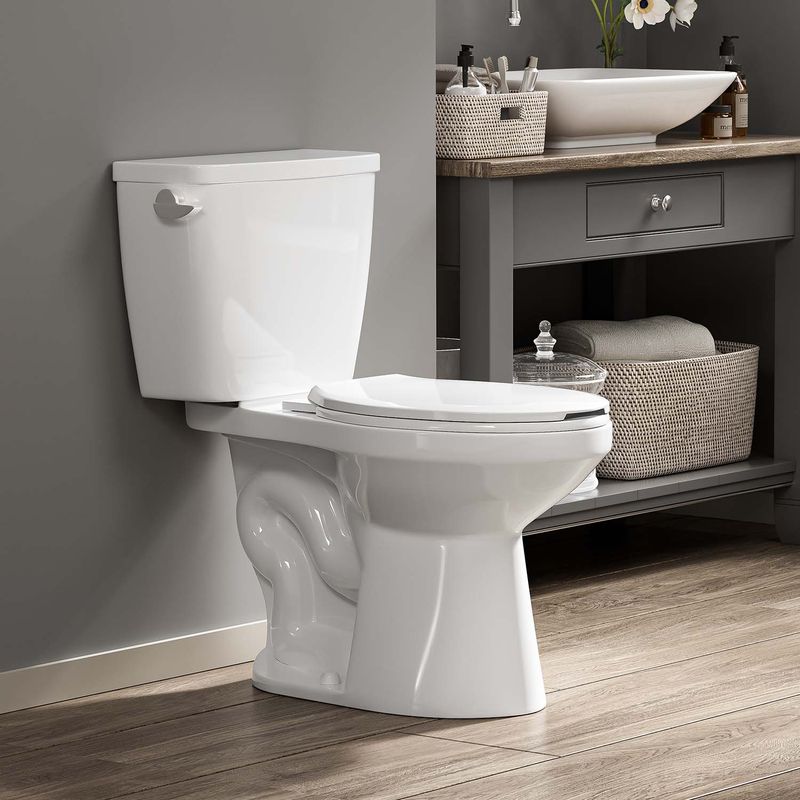
Many Models to Choose From
Non-skirted toilets come in a wide range of styles and designs. Whether you prefer a classic look or a modern and efficient model, you'll find many options to suit your bathroom.
From basic designs to water-saving versions, there's something for every need.
Cons of a Regular, Non-Skirted Toilet
No Unique Visual Appeal
Non-skirted toilets often lack the sleek and modern look of skirted models. The exposed base and visible pipes can make them appear less polished, making them less ideal for those seeking a more sophisticated bathroom aesthetic.
Difficult to Clean
The exposed pipes, bolts, and gaps around the base can collect dirt and grime, making cleaning harder. These areas are harder to reach and may require extra effort to keep clean, which can be a drawback for those who prioritize cleanliness.
Exposed Piping and Bolts
The visible pipes and bolts not only impact the appearance but can also be a maintenance issue. Over time, these parts may rust or wear out, which can make it harder to maintain the toilet's look and function.
Best For
Non-skirted toilets are ideal for those who need an affordable and easy-to-install option without focusing on aesthetics. They are perfect for basic bathrooms or rental properties.
Comparison: Skirted Toilet vs. Non-Skirted Toilet
Choosing between a skirted and non-skirted toilet ultimately depends on your personal preferences, budget, and the design of your bathroom. Understanding the key differences in design, ease of cleaning, performance, and cost will help you make an informed decision.
Here is a detailed skired toilet vs regular toilet comparison:
Design and Aesthetics
The design of your toilet plays a critical role in the overall look of your bathroom. Skirted toilets are renowned for their sleek and modern appearance.
These models have a smooth and continuous base that conceals the toilet's plumbing. The absence of visible pipes and bolts gives them a futuristic and high-end appeal that complements contemporary bathroom designs.
Non-skirted toilets, on the other hand, typically follow a more traditional design, with exposed pipes and bolts beneath the toilet bowl. While some homeowners may find this more rustic or vintage, it can also appear bulkier or less polished in comparison. Non-skirted models are commonly seen in older bathrooms or more classic styles.
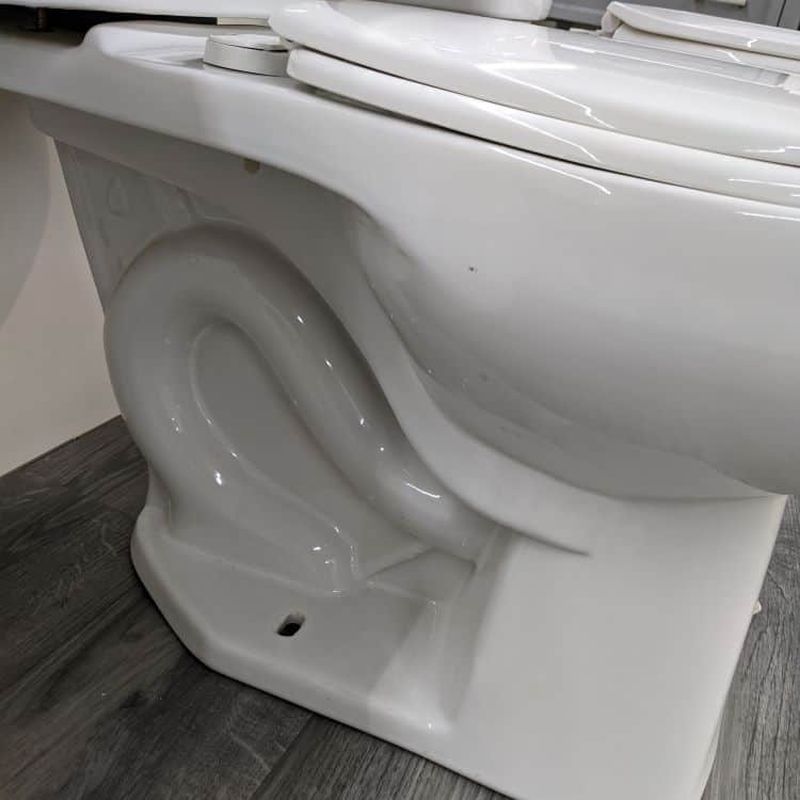
Ease of Cleaning
One of the most significant advantages of skirted toilets is their ease of cleaning. The smooth and enclosed base prevents dust, grime, and cleaning agents from settling in hard-to-reach places. This makes routine cleaning faster and more efficient.
Non-skirted toilets require more effort during cleaning. The exposed pipes and bolts beneath the toilet bowl create small crevices that can trap dust, dirt, and germs.
Therefore, additional scrubbing is required. However, for those willing to invest a little more time, they can be cleaned thoroughly as well.
Maintenance
Skirted toilets are generally easier to maintain because of their seamless design. Without visible piping, the skirted trapway toilet's components are protected from dust buildup, which helps reduce the likelihood of corrosion or clogging. The smooth surface also resists stains better than non-skirted models.
In contrast, non-skirted toilets can present maintenance challenges. The exposed pipes are also more vulnerable to wear and tear. They can rust over time if not cleaned properly or if the bathroom has high humidity.
The gaps and seams around the regula toilet's base may also trap moisture and cause the non-skirted toilet's parts to degrade faster if they aren't cleaned regularly.
Performance and Functionality
When it comes to performance and functionality, both skirted and non-skirted toilets work similarly. Both types are designed to provide efficient flushing with advanced water-saving technology in most modern models.
Consumer Preferences and Trends
Skirted toilets are growing in popularity, especially among homeowners looking to design sleek and modern bathrooms. These toilets with skirts are particularly popular in high-end bathrooms, hotels, and spas where maintaining a pristine and polished appearance is essential.
Non-skirted toilets also continue to maintain a strong presence in the market due to their traditional appeal. Consumers looking for a more budget-friendly or classic design often gravitate toward non-skirted models.
Sometimes, these toilets with skirts are preferred in historical renovations or homes with a vintage or rustic decor theme.
Cost Considerations
Skirted toilets tend to be more expensive than non-skirted models due to the advanced manufacturing processes and the more complex design. The seamless base and extra material contribute to the higher price point.
Additionally, the modern flushing technology often included in skirted toilets can further increase the overall cost.
On the other hand, non-skirted toilets are generally more affordable. The simpler design, with exposed pipes, often translates to lower production costs.
These fully skirted toilets can provide excellent value for those on a tighter budget or those prioritizing functionality over aesthetics.
Installation Process
The installation process for both skirted and non-skirted toilets is generally similar. However, skirted trapway toilets may require a bit more effort due to their compact and enclosed design.
Since the base is sealed, it may require specialized tools or techniques for installation, particularly in the case of wall-mounted models.
Non-skirted toilets are typically easier to install, as the exposed pipes and parts are more accessible. DIY enthusiasts may find it easier to install a non-skirted toilet.
Professional installation is still recommended for both types to ensure proper functionality and prevent potential issues.
Environmental Impact and Energy Efficiency
Both skirted and non-skirted toilets come in water-efficient models. Skirted and regual toilets with dual-flush systems or low-flow technology can reduce water consumption by up to 60%.
Skirted trapway toilets, however, may have a slight edge in terms of long-term sustainability due to their durability. The smooth and enclosed design is often more resistant to stains and damage.
Types of Skirted Toilets
Skirted toilets come in a variety of designs to suit different preferences and bathroom configurations. Understanding the different types of fully skirted toilets can help homeowners select the best skirted toilet based on their needs, space, and budget.
Here's a breakdown of each type, including sizes and features outlined in the table:
Toilet Type |
Sizes |
Features |
|---|---|---|
|
Height: Standard height 15 to 16.5 inches (seated height), comfort height up to 17 inches. Width: 14 to 17 inches. Depth: 27 to 30 inches. |
Integrated tank and bowl. Modern and sleek design. Easier to clean, fewer nooks and crannies. Advanced flushing systems (dual flush and water-saving options). |
|
Two-Piece Skirted Toilets |
Height: Standard height 15 to 16.5 inches, comfort height up to 17 inches. Width: 14 to 17 inches. Depth: 26 to 30 inches. |
More affordable than one-piece models. Easier to transport and install (separate tank and bowl). Skirted design for easy cleaning. Can feature a variety of flushing technologies. |
Wall-Mounted Skirted Toilets |
Height: 15 to 17 inches from floor to seat (adjustable depending on installation). Width: 14 to 16 inches. Depth: Compact, 20 to 26 inches. |
Space-saving design, ideal for smaller bathrooms. Minimalist aesthetic. The tank is hidden behind the wall for space-saving. Advanced flushing technology and water-saving features. Requires professional installation. |
|
Height: Comfort height 16.5 to 18 inches. Width: 14 to 18 inches. Depth: 27 to 31 inches. |
High-tech features like integrated bidets, heated seats, and self-cleaning. Touchless controls for flushing and lid opening/closing. Built-in deodorizing and air-purifying systems. Smartphone app or remote control for adjustments. Water-saving features for efficiency. Sleek and futuristic design. |
FAQs
Here are some commonly asked questions about skirted toilets:
How do I clean a skirted toilet?
Use a non-abrasive cleaner and a soft cloth or sponge. Wipe the skirted area, the bowl, and the tank, ensuring you get into the nooks of the rim and flush the valve.
For deeper cleaning, consider using a toilet brush with a long handle.
Do all brands offer skirted toilets?
Not all toilet brands offer skirted designs. However many of the leading manufacturers like Jabra Sanitary in the sanitary ware industry have introduced skirted models.
It's worth checking the product range of your preferred brand, as skirted trapway toilets have become a sought-after option in contemporary bathroom design.
Are skirted toilets harder to repair?
Skirted toilets can be slightly more challenging to repair due to their sealed design. The skirt hides components like the flushing valve, making access more difficult compared to non-skirted toilets.
However, with professional assistance, repairs can still be completed efficiently. Regular maintenance can minimize the need for repairs.
Can I install a skirted toilet myself?
Installing a fully skirted toilet requires professional expertise. Unlike non-skirted toilets, which typically feature a more straightforward installation process, skirted models can be more complex.
The design may involve hidden bolts and a more intricate installation process. This is why it's recommended to hire a certified plumber for the installation.
What are the latest trends in skirted toilet designs?
Here are the latest trends in fully skirted toilet designs:
Minimalist Aesthetic: Sleek and modern designs with clean lines.
One-Piece Construction: A seamless design that is easier to clean.
Dual Flush Options: Water-saving dual flush systems for efficient waste removal.
Rimless Designs: Rimless bowls for easier cleaning and improved hygiene.
Smart Technology Integration: Toilets with features like heated seats, bidet functions, and touchless controls.
Enhanced Cleaning Features: Self-cleaning mechanisms and advanced flushing technologies.
Color Variations: Matte black or soft pastels to complement diverse bathroom styles.
Conclusion: Choose the Best Skirted Toilets for Your Bathroom
When choosing between skirted and non-skirted (regular) toilets, it ultimately comes down to your preferences and needs. If you want a toilet that looks modern and easy to clean, a toilet with a skirt may be the right choice.
Choose the best-skirted toilet for your bathroom after comparing the four skirted toilets (one-piece skirted toilets, two-piece skirted toilets, wall-mounted skirted toilets, and smart skirted toilets). If any skirted toilet problems, please contact us!







